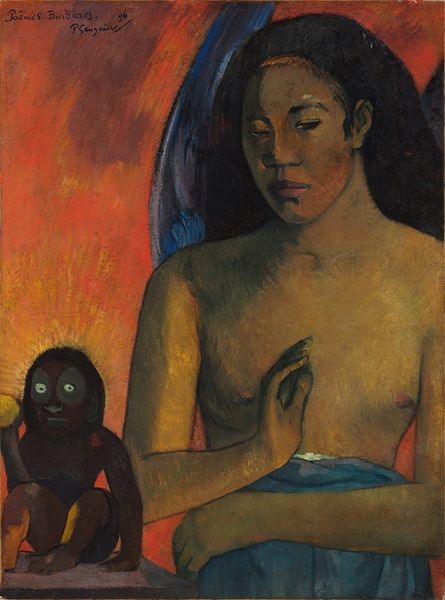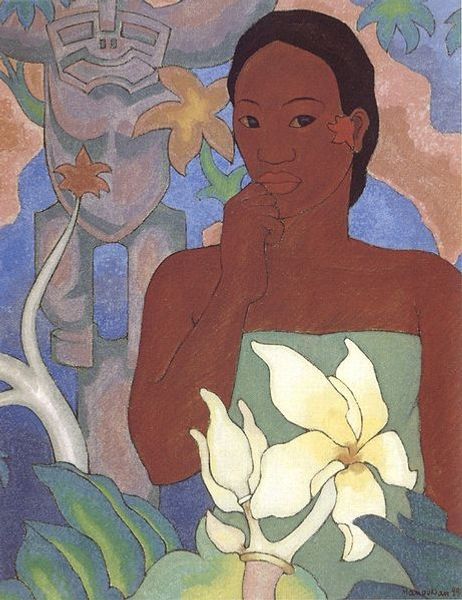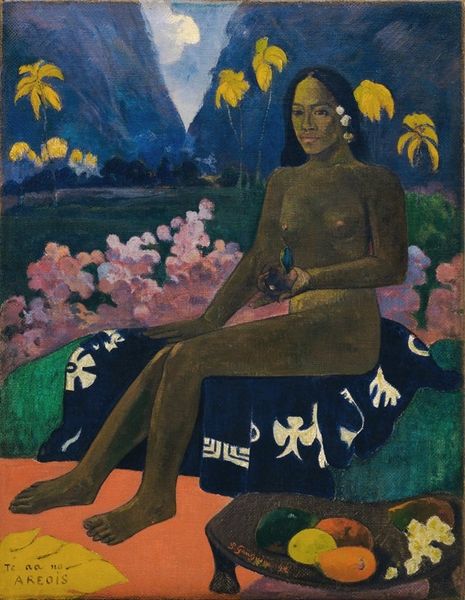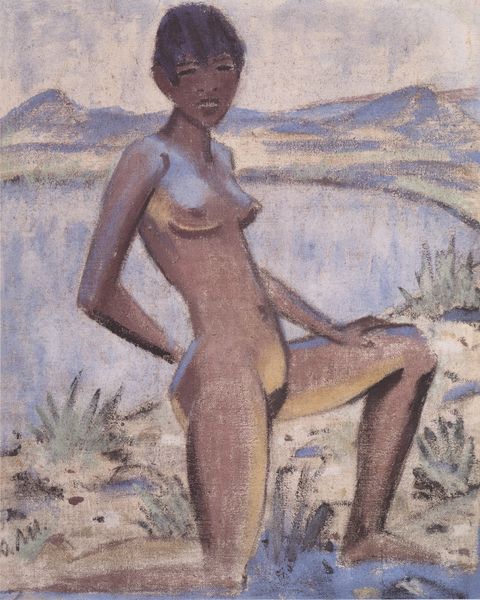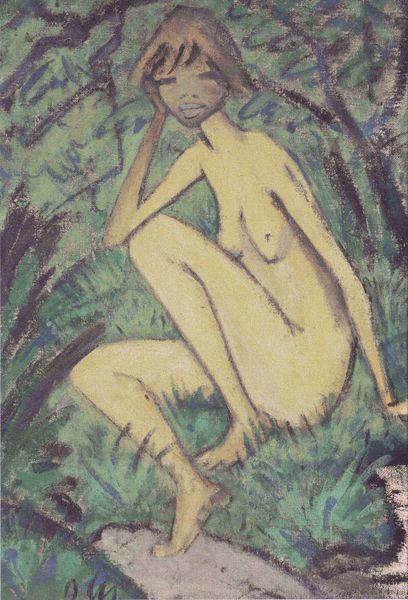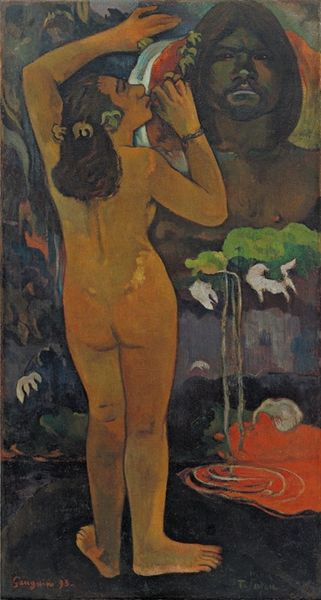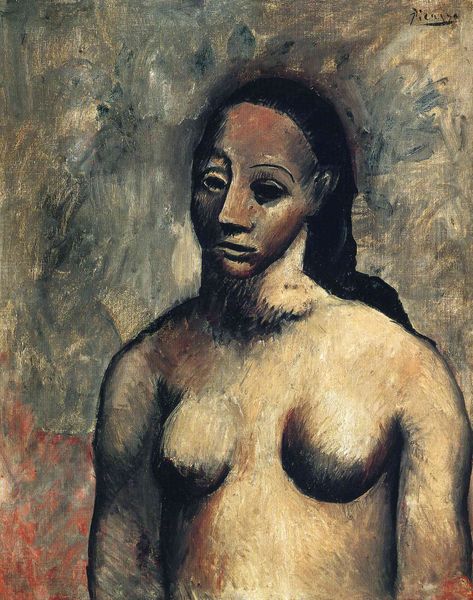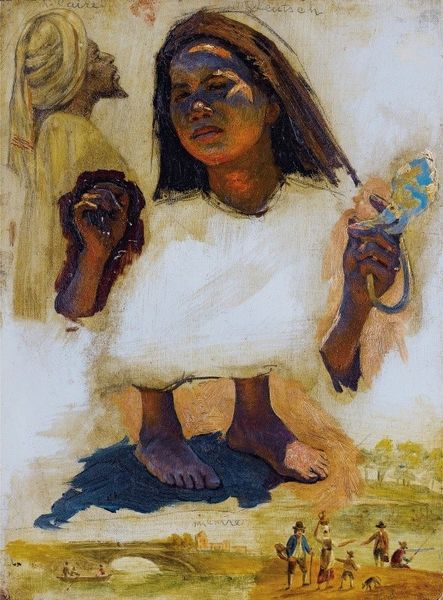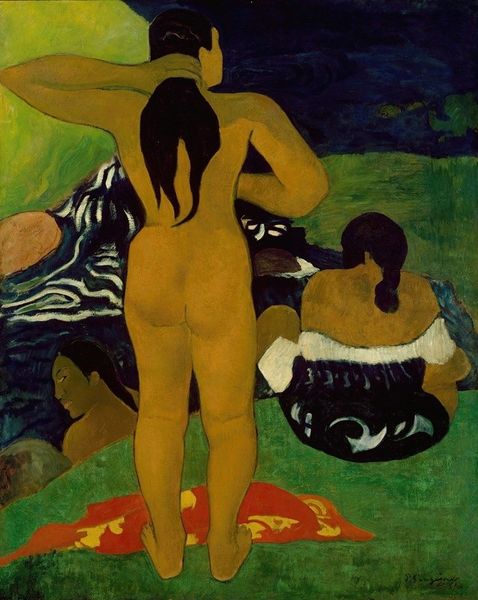
drawing, pastel
#
portrait
#
drawing
#
figurative
#
figuration
#
oil painting
#
portrait reference
#
expressionism
#
portrait drawing
#
pastel
#
nude
#
modernism
Copyright: Public Domain: Artvee
Curator: "Girl From Tahiti," a pastel drawing from 1930 by Mikuláš Galanda. Something about that title paired with the almost dreamlike quality of the piece pulls you in, doesn't it? Editor: It certainly does. My first thought is serenity—a peaceful moment captured with this vibrant yet soft pastel palette. The color choices feel both realistic and intentionally heightened. There’s an aura of exoticism, of course, but a grounded feeling as well. Curator: Grounded is a great word for it. Galanda wasn’t travelling to Tahiti firsthand; his encounter was mediated. He, like so many, likely came into contact with this location through the work of someone like Gauguin. It highlights the public’s interest in imagined island life during this period and how it's shaped through artistic interpretation. Editor: So, he’s filtering this ‘Tahiti’ through other artistic lenses… Layers of representation. That cool, almost alien, blue statue behind her also contributes. Is that an idol or a playful color experiment? It injects such a strangeness, yet doesn't detract from the humanity in her gaze. Curator: Exactly, that duality is Galanda at his best. This statue references a historical artistic context, possibly tribal art, set against this sensuous backdrop. What's fascinating is how he navigates those tensions between ethnographic documentation, artistic license, and maybe even the orientalist perspective of the time. Editor: He really avoids pure objectification, I feel. It feels like he’s honoring this figure. The looseness of the pastel adds to the intimacy, suggesting a fleeting moment, like a secret glimpse rather than a staged tableau. And her look! It’s subtly challenging but also vulnerable, no one is staring out from a magazine page! Curator: Absolutely. Galanda’s engagement here transcends the superficial, sparking contemplation on the intersection of image-making and socio-historical awareness. There’s no easy read, that's what makes it compelling still today. Editor: Ultimately, it's a dance between a real woman, an artist’s interpretation, and the layers of cultural baggage that inevitably accompany a title like "Girl From Tahiti," making it linger long after you turn away.
Comments
No comments
Be the first to comment and join the conversation on the ultimate creative platform.
